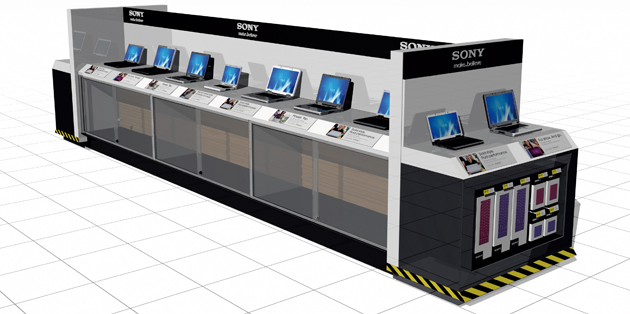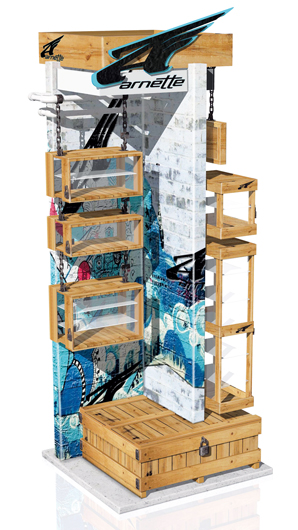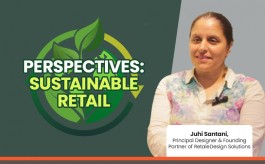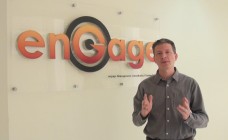5 Common Mistakes to Avoid on Your Next Retail POP Display Project
By Dipanjan Mukherjee | July 06, 2016
We work on hundreds of retail POP display projects a year. Our projects encompass large and small retailers, well established brands, start-up companies, and companies in between. We also work across a broad range of industries. The benefit of the breadth of our work is that it gives us perspective and experience to know what works and what doesn't work. Today we'll discuss 5 common mistakes that we see typically when a new customer is embarking on a retail POP display project.
 Failure to Establish a Budget - Imagine you've decided to buy a new car, but you have no idea how much you want to spend. It's more than likely you're going to spend a lot of wasted time looking at cars you can't afford or are not realistic choices. The process would be far more efficient if you decided you want to spend $30,000 on a new car or so much per month. In that case, you could target your research toward getting the most value for your money given your budget, or perhaps you'll find an awesome hotrod for $28,000 and you can feel good about the $2,000 savings.
Failure to Establish a Budget - Imagine you've decided to buy a new car, but you have no idea how much you want to spend. It's more than likely you're going to spend a lot of wasted time looking at cars you can't afford or are not realistic choices. The process would be far more efficient if you decided you want to spend $30,000 on a new car or so much per month. In that case, you could target your research toward getting the most value for your money given your budget, or perhaps you'll find an awesome hotrod for $28,000 and you can feel good about the $2,000 savings. It's no different with POP display projects. We encounter many customers who can't give us a budget because they just are not familiar with the cost of POP displays or they don't know what is a reasonable budget for their product. We've been in a lot of situations where we work with companies that just can't or won't give us a budget, and then after all the design and pricing work is done, they tell us they can't afford to spend that much on a display. Therefore, the process is much more efficient if you can at least provide your display company with a budget range and encourage them to design the most awesome display possible within that range. If the result is still feeling a little too expensive, you can always ask them to value engineer the display to reduce the cost.
It's no different with POP display projects. We encounter many customers who can't give us a budget because they just are not familiar with the cost of POP displays or they don't know what is a reasonable budget for their product. We've been in a lot of situations where we work with companies that just can't or won't give us a budget, and then after all the design and pricing work is done, they tell us they can't afford to spend that much on a display. Therefore, the process is much more efficient if you can at least provide your display company with a budget range and encourage them to design the most awesome display possible within that range. If the result is still feeling a little too expensive, you can always ask them to value engineer the display to reduce the cost.Failure to Consider All Costs Associated with a Retail POP Display Program- Many customers don't think through the complete economics of a retail display program. They are usually very focused on the cost of producing the display, but that is only one component of the overall POP display program cost. It's important to map out the other costs such as the cost of getting the display to the retailer distribution center or to the stores directly, the potential costs of getting the unit assembled or installed, costs that might be associated with servicing the display, as well as potential retailer charges such as slotting fees, advertising allowances, etc. Some of these costs are one-time costs that can be amortized over the life of the display, and some of them are recurring or tied to stock replenishment (such as the cost of shipping additional product to the store or DC). Having a thorough understanding of your detailed program economics is key to a successful retail program and essential to measuring the impact and return on investment of the program.
Failure to Align Display Investment with Product Value- This is tied to the budgeting discussion in point number 1 above, but it is really important to invest only that amount in a display that can be supported by your product's value or price point. We recently had an overseas inquiry from a customer who was looking for a monster-sized display for his product which was Pringles potato chips. Not only was the display too large for almost any retailer, but the customer wanted to build huge canisters of Pringles to attract attention, in addition to a very expensive custom shelving system. Since the relative value of the customer's product was low, the cost of the display he was proposing made no economic sense.
 It can go the other way as well. We see customers who are compelled to under-spend on a display where the per-unit retail price and the aggregated value of the opening order is high relative to the paltry budget they have allocated for the display.
It can go the other way as well. We see customers who are compelled to under-spend on a display where the per-unit retail price and the aggregated value of the opening order is high relative to the paltry budget they have allocated for the display. Failure to Plan Ahead- This is a pretty obvious mistake, and in many cases it really isn't a mistake but rather a function of a protracted approval process on the part of the retailer which is then followed by an unrealistic in-store date. We are seeing an increasing number of POP display projects that are "rush jobs.†In most cases the cost to produce a rush job is higher because the manufacturer can't always shop around to find the best price on materials, overtime pay might be required to meet the timeline, and expedited shipping costs can cause overruns in freight budgets. Rush projects often result in more mistakes and sub-optimal designs since the shortage of time can require undesirable compromises.
Failure to Understand the Cost of Delay- Very few customers take the time to consider the cost of delay. There might be good reasons to push off the implementation of a POP display project, but rarely does anyone take the time to understand and calculate the opportunity cost of delay. Calculating the lost revenue and profit for each day of delay can be an eye-opening exercise. We've seen customers delay projects for weeks debating over which shade of blue to use on the header sign. They fail to see the cost of that debate.
There are many other types of mistakes that can have a bottom-line impact, but just avoiding these 5 common mistakes can go a long way toward ensuring your next retail POP display program will be successful.
Advertisement
Related Viewpoints
Advertisement

_165_265.jpg)
_165_265.jpg)






Comments